Virtual tours and 3D marketing real estate opens new ways to sell homes. This guide gives a clear path to immersive walkthroughs, explains how tours speed decisions and enable remote viewing, and covers virtual staging, 3D floor plans, listing appeal, agent branding, lead capture from virtual open houses, tech and production best practices, legal and privacy checks, publishing to MLS and social, and metrics for ROI. It finishes with a roadmap for AI and scaling so agents can plan smarter listings and faster sales.
Key Takeaway
- They increase online engagement for listings.
- They help buyers grasp space and layout.
- Agents use 3D tours to highlight property features.
- They reduce unnecessary in-person showings.
- They attract more qualified leads and speed sales.
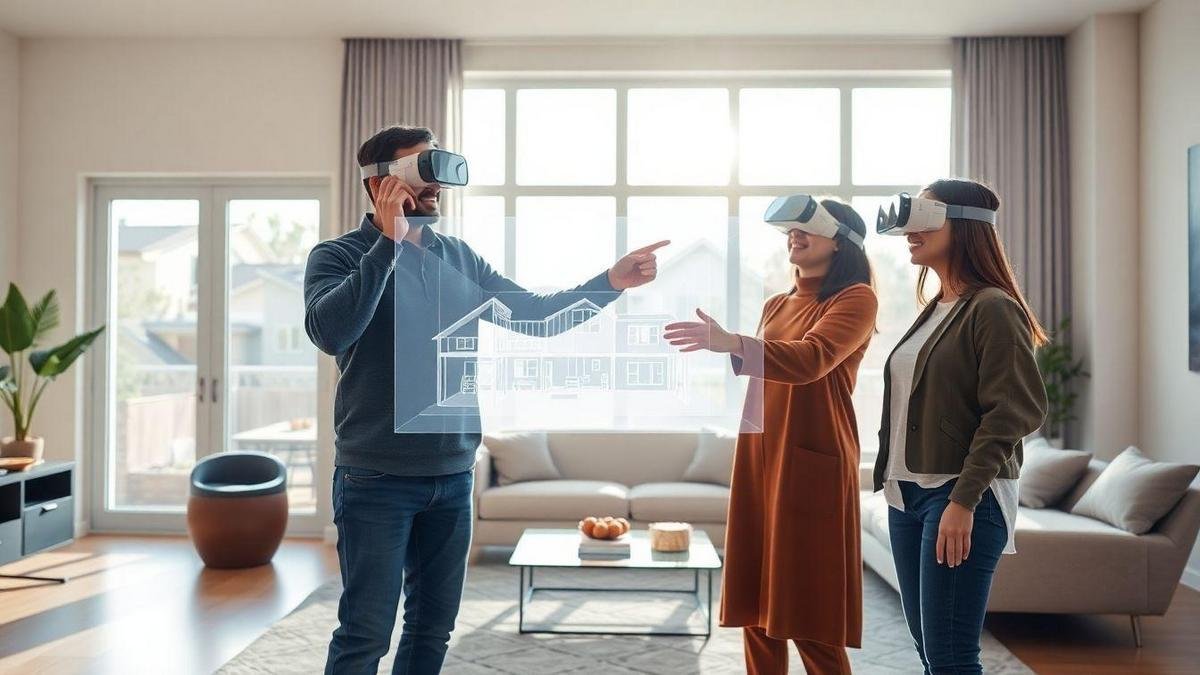
Enhancing buyer experience with immersive property walkthroughs
Immersive walkthroughs put buyers in the driver’s seat: move through a home at their own pace and focus on what matters. That control builds trust because buyers feel they are seeing real space, not a staged snapshot.
These walkthroughs sharpen decision-making. A buyer who explores layout, light, and flow virtually can picture daily life faster, cutting down back-and-forth and surfacing serious interest quickly. Immersion also creates an emotional link—imagining furniture placement or cooking in the kitchen moves the sale forward. Agents who offer high-quality virtual tours often find listings spend less time on market.
How immersive property walkthroughs speed buyer decisions
Immersive tours let buyers compare homes without travel and spot issues or highlights in minutes. Rapid assessment helps them prioritize homes to see in person and decide sooner. Clear 3D visuals reduce uncertainty about room size, ceiling height, and natural light, meaning fewer stalled deals and quicker offers.
Role of 360 virtual tours for real estate in remote property viewing technology
360 virtual tours empower remote viewing with a sense of presence. A buyer on another coast can walk a property and get spatial context. Tools like Virtual tours and 3D marketing real estate give agents measurable advantages: more leads, longer engagement, and repeat access that often turns curiosity into commitment.
Quick buyer checklist for virtual property tours
Buyers should go in with a plan to use time wisely and spot what matters most.
- Check scale: use measuring tools or compare with known objects.
- Inspect light: view at different times if possible.
- Test flow: move from room to room to see layout.
- Look for signs: zoom to spot wear, cracks, or finishes.
- Ask questions: note items to confirm with the agent later.
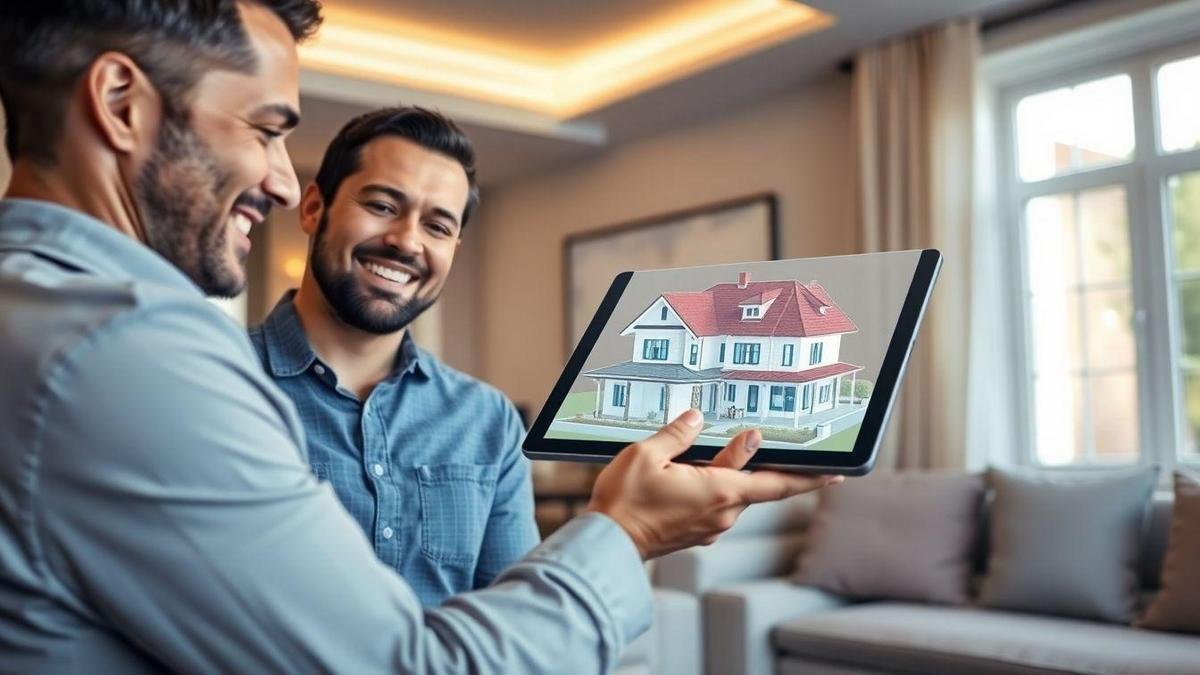
Seller advantages from Virtual tours and 3D marketing real estate
Sellers gain a clear edge with Virtual tours and 3D marketing real estate. They reach a wider audience quickly because buyers can visit a home from anywhere, increasing interest and showings without extra on-site visits. For busy sellers, this cuts time and cost.
Listings with 3D content tend to get higher-quality leads. Buyers who spend time in a virtual tour often form a stronger emotional connection to the space, resulting in fewer tire-kickers and more serious offers. Showing flow, scale, and light in a tour gives buyers confidence—confidence turns into viewings, bids, and closed deals, often shortening the selling window and sometimes driving a premium.
Ways virtual staging and 3D modeling raise listing appeal
Virtual staging and 3D modeling let buyers see a home’s potential without heavy work—a vacant room becomes a cozy living area with furniture and color, turning abstract square footage into real use.
- Highlighting function: shows how rooms can be used
- Cost-effective: less expensive than physical staging
- Faster turnaround: edits are quick if style changes are needed
- Consistent branding: keeps the listing polished across platforms
These tools play to emotions: a well-styled kitchen helps buyers picture dinners and family time, moving decisions. Sellers get a polished presentation that stands out in crowded markets; pair these visuals with strong visual marketing tactics like the ones used in modern real estate video campaigns to maximize reach.
How 3D floor plans for real estate help show layout clearly
A 3D floor plan gives the big picture at a glance, showing how rooms connect and traffic flows. Buyers see which spaces fit their furniture and life, reducing surprises later. Accurate dimensions and scaled visuals build buyer trust and let agents answer questions faster and schedule better in-person tours.
Steps to prepare a home for a virtual open house experience
Sellers should declutter, boost lighting, and pick neutral accents so viewers focus on space. Simple fixes—clean windows, tuck wires away, set a warm lamp—make a big difference on camera. Test internet and camera angles, and provide a short script or notes so the host can point out key features and stories that sell the home.

Agent branding and lead generation using interactive 3D property visualization
Interactive 3D tools give agents a brand advantage—listings move from flat photos to a living, walkable space. When a visitor spends time inside a 3D model, trust and interest grow faster than with static images.
To turn visits into leads, pair 3D views with clear calls to action: embed a contact form inside the tour, or offer a downloadable brochure after short registration. Use dedicated lead generation tools for real estate and integrate them with marketing automation to follow up instantly and score prospects. Track engagement time, room heatmaps, and click paths to learn what draws attention, then tweak headlines, thumbnails, and the placement of the “schedule a visit” button. This is where Virtual tours and 3D marketing real estate moves from novelty to a steady lead engine.
Using real estate virtual reality tours to stand out in marketing
Virtual reality tours cut through the noise. A headset or 360° view lets buyers feel the space—an emotional reaction that makes the listing memorable. Keep production lean: good lighting, clean staging, a clear entry path, and fast mobile load times. Publish to the website, MLS, and social with bold thumbnails to invite clicks—pair these uploads with a strong social media content plan and short highlight clips for platforms like YouTube and Instagram.
Capturing leads with virtual open house experiences and immersive property walkthroughs
Virtual open houses are prime lead-capture moments. Require a short registration to join live tours, offer a live Q&A slot, and provide a downloadable floor plan after signup. Use chat or pinned forms to collect email and phone inside the experience.
- Quick CTAs: Register to join, Ask a live question, Download floor plan, Book a private walkthrough
Score leads by activity: who asked questions, who stayed to the end. Those actions identify hot prospects; follow up fast with tailored next steps like a private showing or financing options. Use retargeting and paid channels to re-engage visitors who didn’t convert—combine tours with retargeting strategies or targeted PPC campaigns to increase conversion.
Simple follow-up script after a virtual viewing
Hi [Name], thanks for joining the virtual tour of [Address]. I noticed you spent time in the kitchen—would you like a closer look in person or a live video walkthrough? I can also send the full floor plan and recent neighborhood sales. What time this week works best?
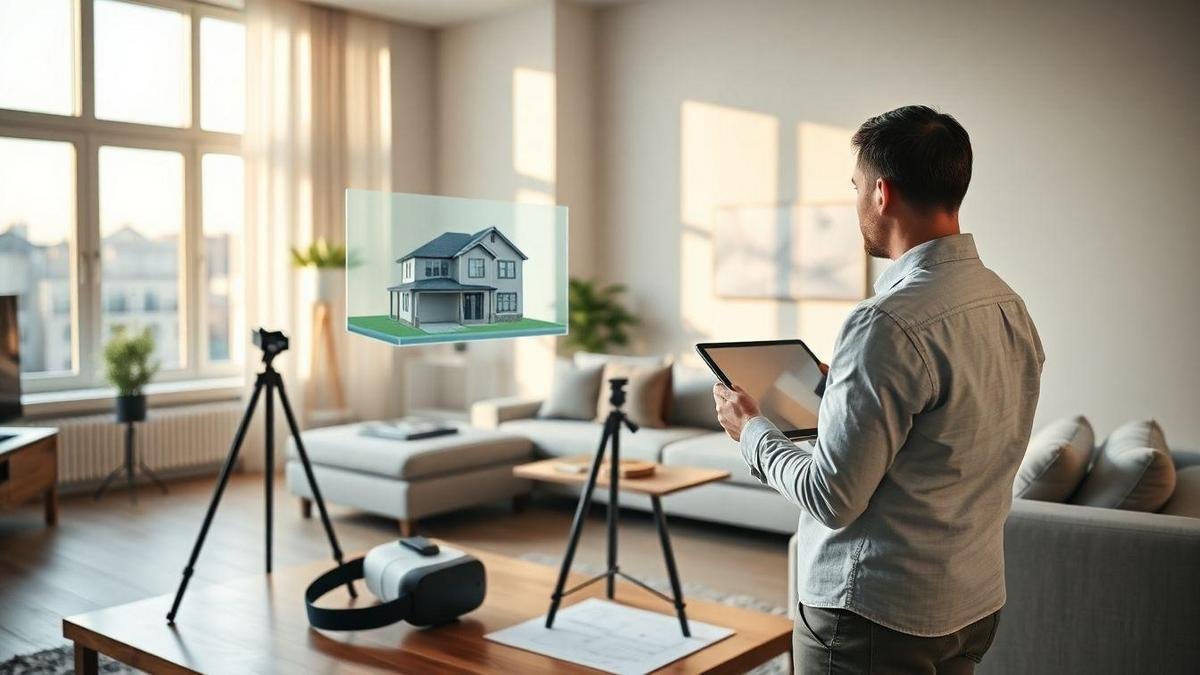
Core technologies behind 3D real estate tours and virtual property tours
3D real estate tours rest on a stack of visual capture and rendering tools. Cameras range from simple 360° cameras to high-resolution DSLR rigs; many teams add LiDAR or depth sensors. Software uses photogrammetry and stitching to turn photos and depth points into navigable panoramas or meshes. An agent who used only photos last year may now show a full walkthrough in a single link.
The viewer experience runs on real-time engines and web tech. Platforms often use WebGL or custom viewers to stream panoramas and textured 3D models in the browser. Matterport-style ecosystems combine capture hardware, cloud processing, and an embeddable viewer—this chain from capture to cloud to display powers Virtual tours and 3D marketing real estate.
Accuracy and interactivity come from point clouds, meshes, and texture mapping. Point clouds from LiDAR give precise measurements; meshes from photogrammetry add surfaces and textures. The system then layers hotspots, floor plans, and measurement tools so tours are actionable, not just pretty.
Differences between 360 virtual tours for real estate and full 3D modeling
A 360 virtual tour is mostly stitched panoramas—quick to capture, process, and cost-effective for wide reach and open houses. Full 3D modeling builds geometry and editable assets; it’s slower and costlier but supports accurate measurements, virtual renovations, and high-end VR—preferred for developers and architects.
When to use virtual staging and 3D modeling versus live photos
Virtual staging shines when a home is empty or poorly furnished. It’s cheaper than a full photo shoot and faster than moving furniture. Live photos remain crucial for authenticity and curb appeal—texture, real lighting, or garden condition matter. Use 3D modeling when accuracy matters: renovation proposals, interactive floor plans, or immersive VR for remote investors. A mix often works best: a strong hero photo, a 360 walkthrough, and a staged virtual view for key rooms. Combine those assets with broader digital strategies like digital marketing tactics to amplify listing exposure.
Key tech checklist for reliable tour creation
- Capture Gear: 360 camera or DSLR, tripod, optional LiDAR/depth sensor
- Lighting: HDR shots or bracketing for consistent exposure
- Processing Software: Photogrammetry or stitching tools and cloud processing
- Hosting & Viewer: WebGL-compatible viewer or platform (Matterport-style)
- Accuracy Tools: Measurement validation and floor-plan output
- Delivery: Mobile-ready links, embed options, and download backups
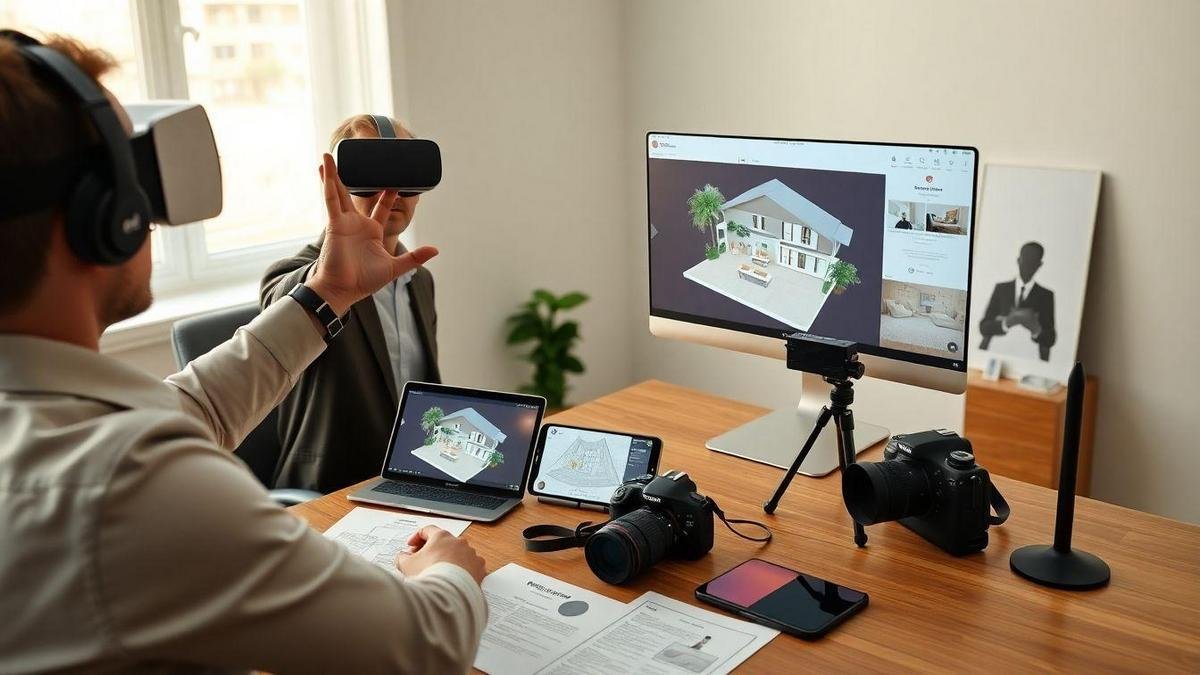
Production steps and best practices for Virtual tours and 3D marketing real estate
First, plan: map the property, set a shot list, and schedule times when natural light is strongest. Treat a shoot like a short film to cut retakes and keep the tour tight.
During capture, move slowly, keep overlap between scans, and label rooms for easier editing. In post, stitching, color correction, and removing distractions make the tour feel professional. Compress textures and choose a fast host to avoid losing viewers.
For distribution and conversion, embed the tour in listings, link it in email campaigns, and add clear calls to action like “Book a viewing” or “Download floor plan.” Track clicks and time spent to learn what buyers care about and refine the process. Where aerial context helps, pair interior tours with high-quality drone photography for neighborhood perspective and exterior shots.
Planning, scanning, and editing for accurate 3D real estate tours
Walk the space ahead and note reflective surfaces, tight corners, and clutter. Staging helps—declutter and add simple accents. During scanning, use manual exposure and consistent camera height for accurate measurements. In editing, align scan points carefully and clean up floating artifacts to produce trustworthy tours.
Quality control tips for interactive 3D property visualization
Start QC by viewing the tour on phone, tablet, and desktop to spot scale issues, blurry textures, or slow loads. Have a colleague or friendly buyer test the tour and ask them to find features—feedback catches what the creator misses. Finally, compare virtual measurements to a laser measure and confirm labels match the floor plan.
Minimum equipment list for a professional virtual tour
- 360 camera (high-resolution)
- Tripod with level
- Laser distance meter
- Spare batteries and memory cards
- Laptop with editing tools
- Simple lighting kit or portable LED panels
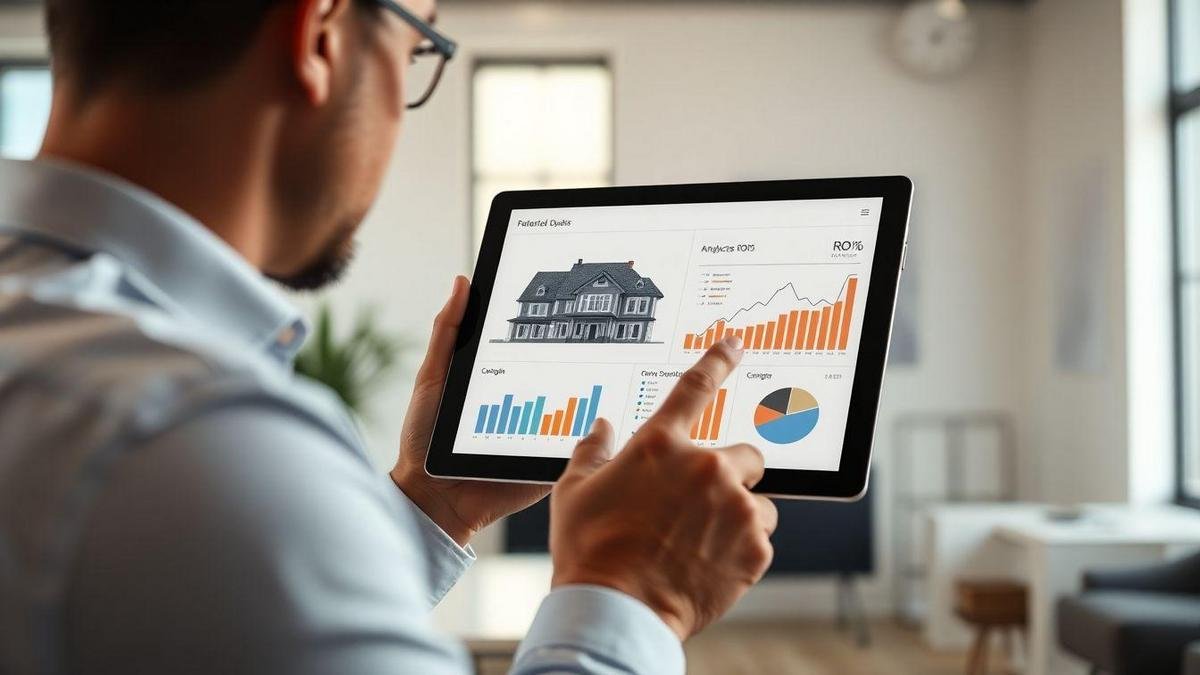
Measuring impact and ROI of virtual property tours and 3D real estate tours
Agents adopting Virtual tours and 3D marketing real estate should treat virtual tours like a new channel: set a baseline, track changes, and compare results to the old method. With the right numbers, sellers see where money moves and agents can prove the tech pays for itself.
ROI shows up in faster sales and cleaner leads. Cost per lead, days on market, and conversion rate tie directly to fees and holding costs. Cutting listing time by weeks saves mortgage, tax, and staging costs and often leads to stronger offers.
Run side-by-side tests when possible, use a standard reporting window, and tag leads that come from the tour to trace the line from a virtual walkthrough to a signed contract. Tie tour analytics into the wider marketing ROI framework and your sales funnel to see true lift.
Metrics to track: engagement, leads, time on market, and conversions
Track engagement first: total views, average time on the tour, and heatmap clicks. Longer tour times and repeat visits hint at serious buyers. Then capture leads and conversions: contact form fills, requests for a showing, and offers. Measure days on market as a hard outcome.
Case metrics showing how immersive property walkthroughs shorten listing time
Real agents see clear shifts when adding immersive tours—more early attention often leads to faster offers. Typical before-and-after snapshot:
- Views per listing: 1,200 → 2,600
- Leads per month: 8 → 13
- Days on market: 45 → 18
- Conversion rate (to showing/offer): 4% → 8%
Faster sales cut carrying costs and can push buyers to act quicker, which often raises the final price.
Simple dashboard items every agent should monitor
- Total views and unique visitors
- Average time on tour
- Lead rate (leads ÷ views)
- Qualified leads (pre-approval or serious inquiry)
- Days on market
- Offer rate and close rate
- Ad spend per lead
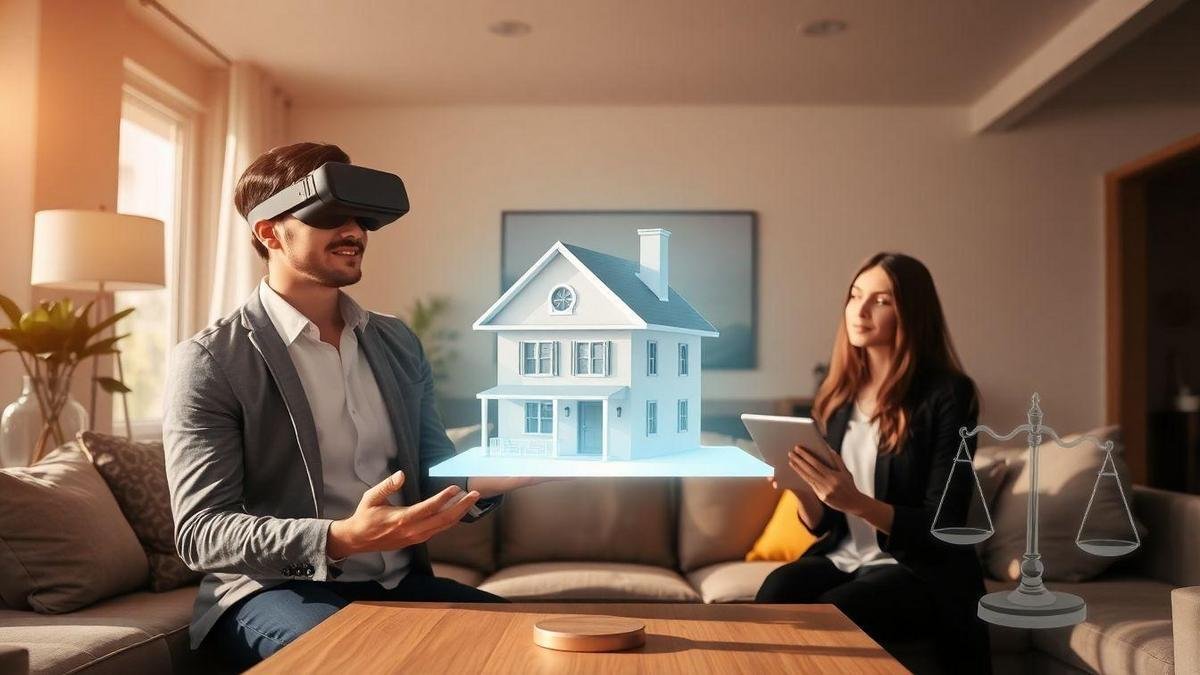
Legal, privacy, and accuracy considerations for virtual open house experiences
Treat virtual open houses like public statements—disclosure rules and local advertising laws apply. Misrepresentation claims can arise if a tour shows a room as larger than it is or masks flaws with heavy filters. Simple, visible labeling and plain facts avoid many issues.
Privacy is a daily concern: get consent before recording, remove or blur personal items, and strip location data from images. Laws such as GDPR and CCPA may apply depending on where buyers live. When offering Virtual tours and 3D marketing real estate, explain how visitor data is stored and who sees it.
Accuracy ties to disclosure and privacy: state what was changed (virtual staging, color edits, time-of-day lighting). Ensure measurements and feature lists match public records and keep logs of versions and publishing dates.
Disclosure rules to avoid misrepresentation in virtual tours
Label edits clearly: note if furniture is virtual, if walls are non-load-bearing, or if a pool is seasonal. If a lens makes rooms look larger or drone shots include nearby features not part of the parcel, add context in the listing text. Use lines like approximate measurements to reduce claims of misleading advertising.
Privacy best practices for remote property viewing technology and 360 virtual tours
Obtain written consent from sellers and mention visitor tracking. Use platforms that allow password protection or time-limited links for private showings. Remove faces and license plates from footage and block access to neighbor interiors. Limit retained data, delete raw files when not needed, and strip metadata. State a short retention policy in the consent form.
Mandatory checks before publishing a virtual tour
- Confirm disclosures (staging, edits, measurements)
- Verify consents and privacy protections
- Remove or blur personal identifiers and metadata
- Check legal compliance for local advertising and housing laws
- Test access control: passwords, expiring links, visitor logs
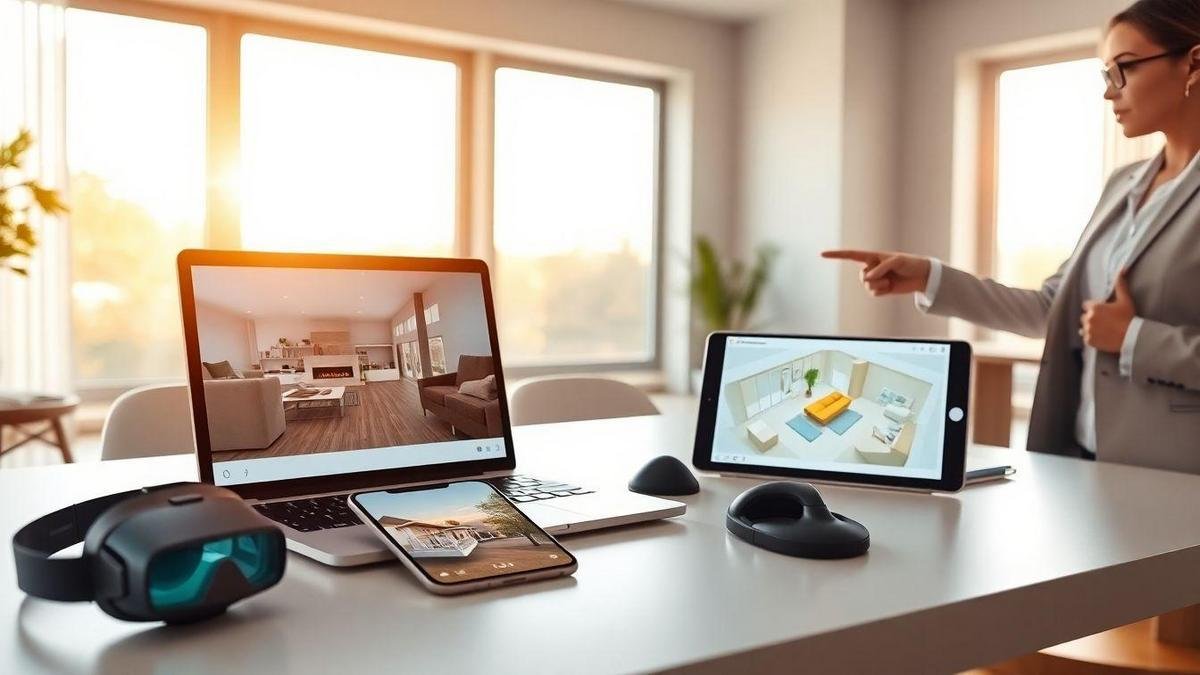
Publishing and platform integration for Virtual tours and 3D marketing real estate
Publish Virtual tours and 3D marketing real estate on hosts that deliver fast links, clean embeds, and clear metadata. Think like a buyer: quick mobile access, clear preview images, and a direct call to action. Integration options include Matterport, 3D Vista, or custom WebGL viewers—choose a host that offers embed code and an SEO-friendly landing page, plus shareable thumbnails and short preview clips for social.
Regular upkeep matters: check load speed, mobile behavior, and thumbnail updates. Refresh tours after staging changes, update photos, and swap preview clips seasonally to keep listings fresh.
How to add 3D real estate tours to MLS, websites, and social media
Most MLS systems include a Virtual Tour field—paste the provider link and add a clear thumbnail in the gallery. If the MLS allows embeds, include an iframe from Matterport or a GLTF viewer. Fill out the virtual tour title and description for search visibility.
On websites, use an iframe for quick display or native WebGL for a seamless experience; pair embeds with website optimization and a mobile-first approach so pages convert visitors into contacts. For social, post a 20–30 second highlight clip with the full tour link; Facebook supports 360 content natively, while Instagram favors vertical video and link-in-bio. Use targeted distribution and YouTube strategies for longer walkthroughs.
Best formats for embedding interactive 3D property visualization on listings
Balance interactivity and performance: iframe (HTML5) embeds from platforms like Matterport are plug-and-play; WebGL with glTF/GLB allows deeper interactivity and optimized file sizes. Always include fallback media: short MP4 clips or 360 JPEGs as previews, plus a static floor plan image and a thumbnail GIF to keep pages fast.
Quick compatibility checklist for listing platforms
- Accepts external tour URL
- Allows iframe embeds
- Supports 360 images
- Displays MP4 previews
- Mobile-friendly rendering
- Preserves thumbnails and meta tags

Future trends and scalability of real estate virtual reality tours
AI and automation will drive the next wave of virtual property experiences. Virtual tours and 3D marketing real estate will become standard sales tools. Scanning, stitching, and hosting will shrink from days to hours so teams can list more properties faster and reach buyers across time zones.
Cloud delivery and template systems let firms scale with consistent branding and navigation. Analytics will show which tour elements convert leads into visits and offers. Agencies that adopt repeatable processes will cut marketing cost per listing and increase lead velocity.
AI, automated 3D floor plans for real estate, and faster tour creation
AI now automates floor-plan creation from photos and scans, lowering manual drafting needs and speeding production. When a scanner feeds the model, automated 3D floor plans arrive in hours. Voiceovers, hotspots, and staging suggestions can be generated automatically, enabling agencies to publish many more tours per week without dropping quality—tap into trends in AI in real estate sales and marketing to plan automation and scale.
Scaling virtual property tours across portfolios with consistent quality
Scaling requires rules and shared assets: style guides, naming conventions, and preset camera paths keep tours uniform. A central QA checklist flags issues before publishing. Track engagement across neighborhoods and property types to decide where to invest in higher-fidelity scans. Train a small core team to manage the toolchain as tour volume grows, and link tour analytics into your broader sales funnel to improve handoffs and nurture leads efficiently.
Roadmap for adopting new 3D marketing real estate tools
Start with a pilot: pick 10 properties, test one vendor, and measure time to publish and lead uplift. Next, lock in data flows (scans → models → hosting → MLS). Train a tight team on capture and QA, standardize templates and documentation, then roll out in waves while monitoring KPIs like time to publish, tour engagement, and lead conversion.
Conclusion
In short, virtual tours and 3D marketing real estate reshape how properties are shown and sold. They build trust, boost engagement, and turn casual browsers into qualified leads. For an agent, the math is simple: better visuals and faster access mean fewer days on market and improved ROI.
The technology stack—360 capture, LiDAR, WebGL, and emerging AI—is the engine. The playbook is honest and repeatable: clear disclosures, strong privacy safeguards, and tight quality control. When those pieces fit, listings shine in a crowded market.
Adoption is a stepwise climb, not a leap. Pilot small, measure engagement, lead rate, and days on market, then scale with templates and a QA gate. Time saved becomes money earned.
For practical templates, case metrics, and the next wave of tools, explore more at https://realhubly.com.
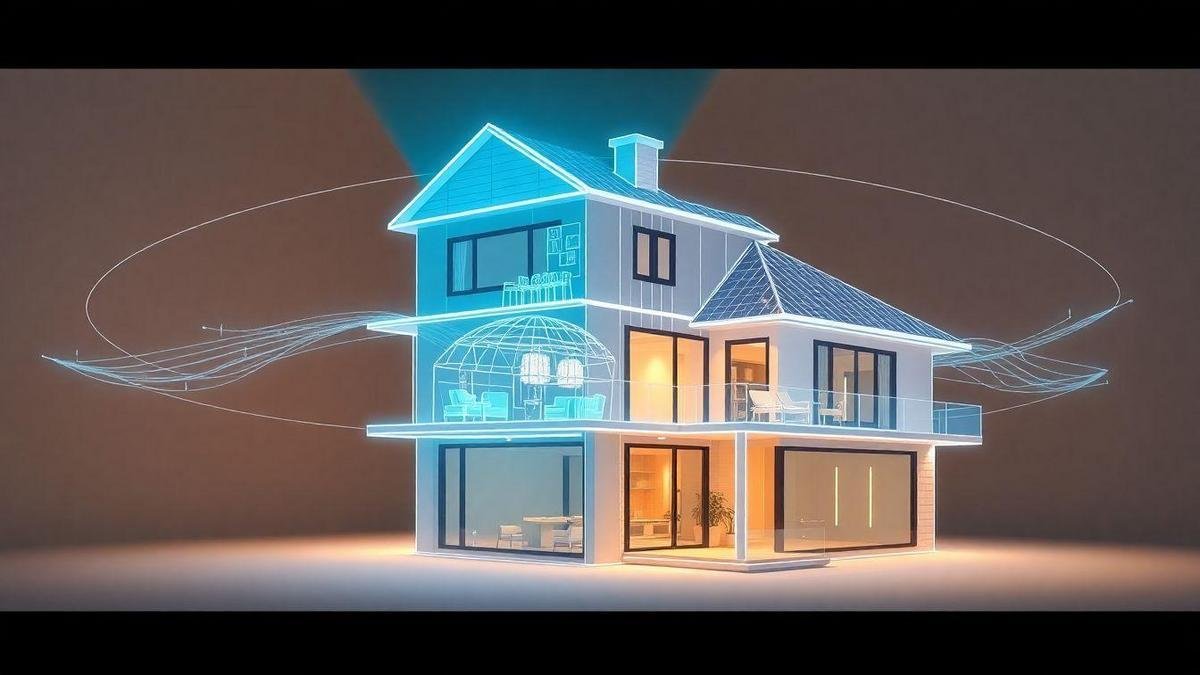
No responses yet